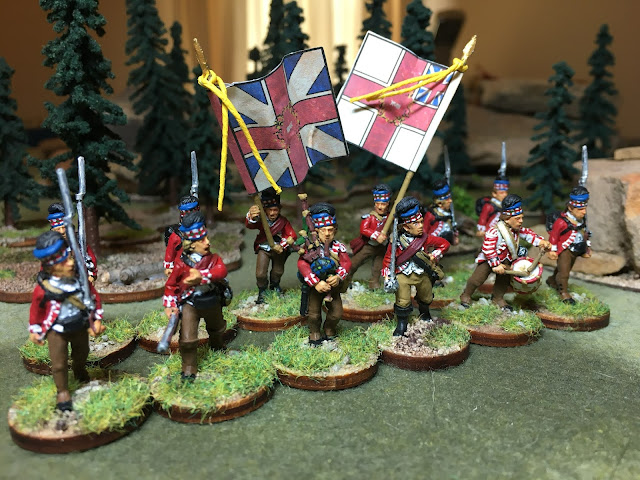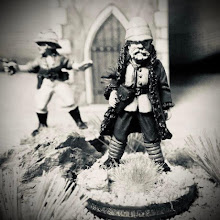After the outbreak of the American War of Independence in 1775, Simon Fraser, Master of Lovat, was authorized to raise the 71st (Highland) Regiment of Foot. With companies mustered in Inverness and Stirling, two battalions were formed and in April 1776 the 71st Highlanders, known informally as ‘Fraser’s Highlanders’, sailed from Glasgow as part of the reinforcement of British forces in America. Elements of both battalions, totaling about 400 men, were captured by rebel naval forces in actions both on the high seas and in Boston Harbor. However, most of the regiment arrived safely off New York in August 1776 and the remaining companies were brigaded into three provisional battalions for the campaigns 1776 and 1777.
After the capture of Philadelphia, the 71st, having been reduced by sickness, was sent back to New York where the Regiment was joined by replacements from Scotland and resumed its original two-battalion structure. In 1778, further companies were raised in Scotland and later that year, the 71st was sent south to campaign in Georgia and the Carolinas. Although both battalions were again considerably reduced by sickness, a skeleton battalion structure was maintained. The 1st Battalion was effectively destroyed at Cowpens in January 1781 with many men being taken prisoner. The Regiment was formed onto a single battalion which went into captivity after Cornwallis’ surrender at Yorktown in October 1781.
The 71st Regiment of Foot or ‘Fraser’s Highlanders’ served in both the Northern and Southern Campaigns, participating in these major battles: Brooklyn (1776), Brandywine (1777), Savannah (1778), Briar Creek (1779), Siege of Savannah (1779), Siege of Charleston (1780), Camden (1780), Cowpens (1781), Guilford Courthouse (1781), and Yorktown (1781).
In April 1782 the remaining battalions of the 71st Regiment were re-formed into two distinct Regiments, the 71st and the Second 71st. The first of these two new units consisted of the remaining men of the original regiment, who had not been killed in action or captured, and numbered only 189 when it set sail from Charleston with the evacuation of all British forces in December 1782. The 2nd 71st was disbanded in 1783 and the 71st Regiment was disbanded in 1786.
One of the longer projects I did; not because the figures were hard to paint but because I kept putting them aside to paint other units. The figures are from the excellent Perry Miniatures American War of Independence metal range and were mounted for Rebels and Patriots though they can be easily used for Muskets and Tomahawks, Sharp Practice and other popular rule sets.








Nice dicing on the caps.
ReplyDeleteThe bonnets are what make this unit since there are no kilts. I took my time with them!
DeleteNeil
Great work on some very nice figures Neil - nice potted history although as a Scot a slightly depressing litany of losses and failure! The AWI isnt the most inspiring period in British military history - very pretty uniforms though!
ReplyDeleteThanks. After January 1777 it was an unwinnable war but fun to game
DeleteNeil
Interesting regimental history and impressive brushwork, Neil.
ReplyDeleteThank you Jonathan. The 71st is often overlooked.
DeleteNeil
Nice Highlanders...as I always believe- you can never have enough Highlanders!
ReplyDeleteJohn,
DeleteI agree! Show me a new Highlander figure and I have to paint it. Eyeing the Indian Mutiny now.
Neil
I agree, great painting! And of course one can never have enough Highlanders!
ReplyDeleteJim
Thanks!
DeleteNeil